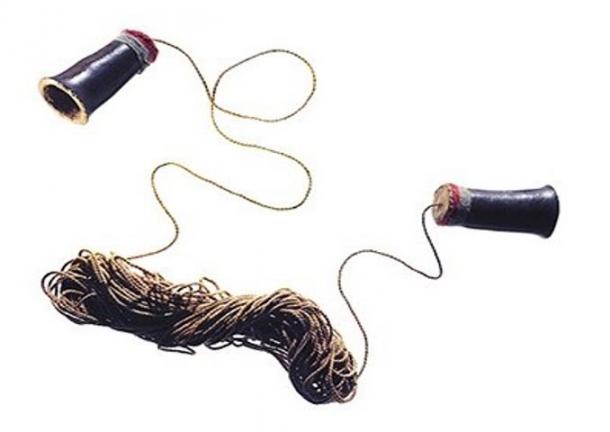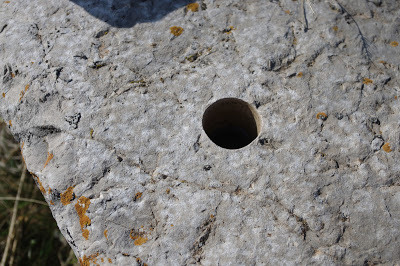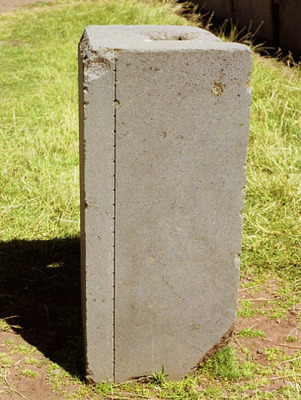Telephones, a 1400 year old telephone system found
1,400-YEAR OLD TELEPHONE
An amazing invention of the ancient Chimu civilization
The enigmatic ancient communication device. Credit: Smithsonian National Museum of the American Indian
Found in in the ruins of Chan Chan, Peru, an innovative communication artifact is thought to have been made 1,200 to 1,400 years ago and is known as the earliest example of telephone technology in the Western Hemisphere.
This seemingly out-of-place-artifact is evidence of the impressive innovation of the coastal Chimu people in the Río Moche Valley of northern Peru.
Ramiro Matos, curator of the National Museum of the American Indian (NMAI) told Smithsonian, “This is unique. Only one was ever discovered.
The ANCIENT telephone is much like the “lover’s telephone” that has been known for hundreds of years but which became popular in the 19th century, It was usually comprised of tin cans connected with string, used to speak back and forth.
This ancient Chimu device, described as an instrument, however, is composed of two gourd tops bound with a length of cord.
The gourds, each 3.5 inches (8.9 centimeters) long are coated in resin and act as transmitters and receivers of sound. Around each transmitter of the gourd bases is stretched-hide membrane. The 75-foot (22.8 meter) line connecting the two ends is made of cotton-twine.
The simplicity of the device disguises its implications.
This one-of-a-kind artifact, reportedly predates the earliest research into telephones from 1833 (which began with non-electric string devices) by more than a thousand years.
Researchers can piece together how the instrument worked.
The precious telephone, with the seemingly magical ability to channel voices across space to be heard directly in the ear of the receiver was, “a tool designed for an executive level of communication” said Matos.
There might have been many applications, such as communication between novices or assistants and their higher-ranking elites through chambers or anterooms. No face-to-face contact would have been needed, preserving status and ensuring security.
Like many other ancient marvels, it might also have been a device to astound the faithful. Disembodied voices emitting from a hand-held object might have shocked and convinced people of the importance and station of the upper class or priests.
The artifact was in the possession of Baron Walram V. Von Schoeler, a Prussian aristocrat, who is less flatteringly described as a “shadowy Indiana Jones-type adventurer.” He participated in many excavations in Peru in the 1930s, and may have dug up the artifact himself from the ruins of Chan Chan.
He distributed his collection among various museums, and the artifact eventually ended up at the storage facility of the National Museum of the American Indian in Maryland, USA, where it is treated delicately, preserved in a temperature controlled environment as one of the museums greatest treasures. (1)
The use of these phones may be more widespread than we know. Here are some ancient hole-drilling feats from Peru (Puma Punku) and Bolivia (Tiahuanaco): There appear to be signs of ancient machinery and engineering that equal and sometimes even surpass the capabilities we have today. All around the world we find signs of high-tech precision hole drilling into hard rocks such as basalt, limestone and granite. These cannot be explained with the tools that were supposedly used by the ancients. What follows are a few examples from ancient Egypt. Note the spiral grooves:
Here is what wiki says about drilling granite holes:
“Granite counters and flooring are popular among homebuilders and homeowners because of the material’s attractiveness and durability. Granite comes in a wide variety of colors and finishes and, despite being somewhat more expensive than most alternatives, it continues to be among the most popular materials in high-end building and remodeling projects. Because of its hardness and relative brittleness, however, granite can be a tricky material to work with: You need special saws to cut granite tiles and industrial-level saws to cut counter-thickness pieces. It also takes special care and tools to drill through granite. The wrong method or drill will likely result in either ruined drill bits or cracked granite.”
The page then continues to show how relatively small holes can be done with high-speed diamond heads, in addition to several warnings about the rock chipping. So even with industrial-style drills and on small holes, it`s a difficult task.
That would leave us with the conclusion that someone with high-tech equipment drilled them.
The Tubular Drill
This tool was used by Ancient Egyptians to hollow out limestone, granite and other hard stones. Johnson declares that these tubular drills “removed material 500 times faster than the rate that can be achieved by modern diamond-headed power drills.” In addition, he conveyed that “To drill at that speed would require a cutting head capable of supporting several tons of pressure while maintaining absolute cutting precision.” (3)
Besides the sophistication of this 1400 year old 19th century style communication device (telephone), ancient people used advanced drilling machinery to run telephone lines through solid granite.
~Chris L Lesley
(1): http://www.ancient-origins.net/artifacts-ancient-technology/1200-year-old-telephone-amazing-invention-ancient-chimu-civilization-020490#ixzz3ngs4dNcY
Follow us: @ancientorigins on Twitter | ancientoriginsweb on Facebook
(2) http://www.ancient-atlantis.com/evidence-of-ancient-high-tech-drilling/
(3) http://atlantablackstar.com/2015/06/12/9-engineering-feats-pulled-off-by-the-ancient-egyptians-that-would-be-nearly-impossible-for-modern-engineers-to-duplicate-today/2/





Comment